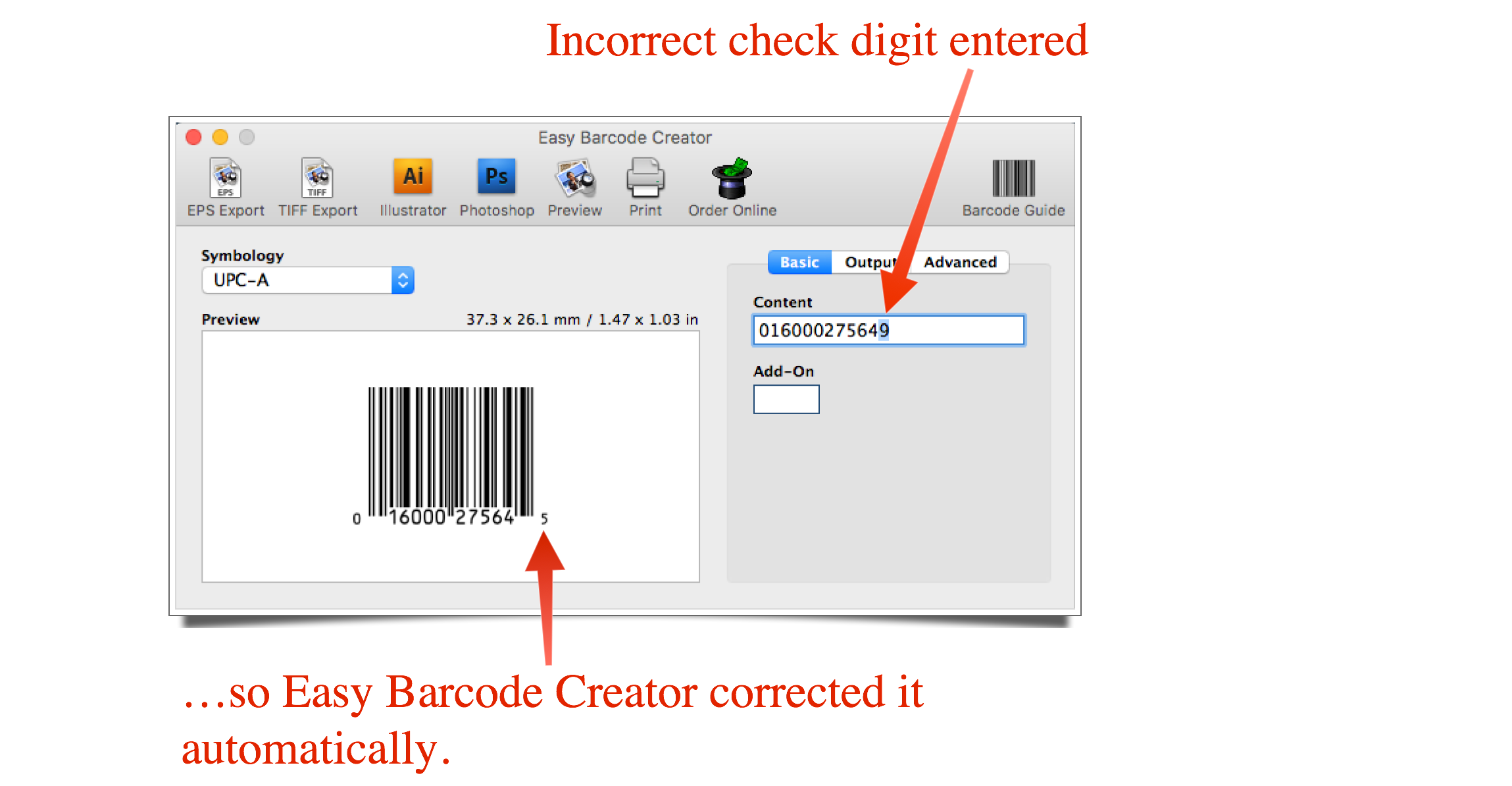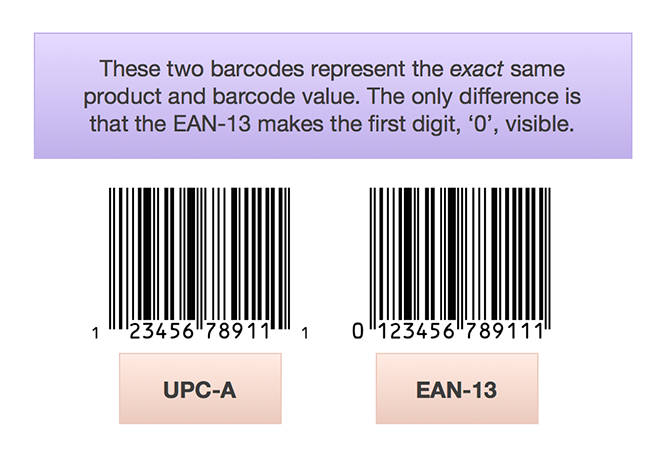UPC/EAN/ITF-14 Frequently Asked Questions
Where do I get a retail barcode number?
If you don't have one already, there are a few ways to get a unique barcode value for your product:
- Register with GS1, the regulatory agency for UPC/EAN barcodes in the United States. In other countries, there's generally a local chapter of GS1. You pay them an annual or one-time fee to reserve a barcode prefix – the first part of your UPC is the prefix, then the remaining numbers are the number that you assign to a particular item.
- Use the prefix that your company already owns and produce a barcode for a new unique number under that prefix.
- Get a single barcode value from a company that already owns a prefix and will sell you one of their barcodes. You can easily find all sorts of these kinds of companies online.
Once you have a UPC/EAN barcode value, you can enter that number into Easy Barcode Creator to generate your barcode. So, your number comes from somewhere else, and Easy Barcode Creator turns that number into a scannable barcode.
Why is the last digit of my retail barcode wrong?
It isn't. The last digit of all UPC, ISBN and EAN barcodes is called a check digit. Easy Barcode Creator automatically calculates this for you so that an incorrect check digit can’t be used (thereby rendering an invalid barcode). You can also verify the correct check digit using GS1’s check digit calculator.
If you enter the wrong check digit, Easy Barcode Creator will ignore your incorrect input and enter the correct check digit.

How does UPC/EAN barcode height adjustment work?
Easy Barcode Creator can make your barcode shorter or taller than the default, internationally accepted default size using the Bar Height option. Shorter barcodes are, for example, very commonly used in size restricted situations. Adjusting the height of the barcode does not affect its scannability because the width is not affected by this change.
Technically, adjusting the height of a UPC/EAN can be considered a violation of generally accepted standards for UPC/EAN generation when used in environments governed by GS1, a retail standards organization. We provide this option because it a) is very widely and successfully used in the global market on small labels, and b) does not affect the scannability of the barcode. In general, you should leave the height at its default option unless there's some specific reason to change it.
Do I want a UPC or an EAN? How do I convert between the two?
UPC-A barcodes (12 digits) are typically used in the United States and Canada; EAN-13 barcodes (13 digits) are used everywhere else in the world.
These barcodes, despite having different names, are actually exactly the same in terms of the bar pattern – they're both 13-digit barcodes. A UPC-A's first digit (hidden in the text below) is always 0, and the assumption is that your UPC prefix starts with 0 if it was issued in the United States or Canada. So, you can make the same barcode in an EAN-13 by simply adding the 0 yourself. If your prefix is from outside the United States, it doesn't start with 0. Here's a complete list.
